Aortic Valve Replacement Surgery
As I personally experienced, an aortic valve replacement surgery (AVR) is a surgical procedure used to implant a prosthetic valve in the patient's heart. The two most common forms of heart valve replacement devices are:
- A mechanical valve replacement; and
- A bioprosthetic valve replacement, or biological valve, which is made from the tissue of a pig, cow, horse or human.
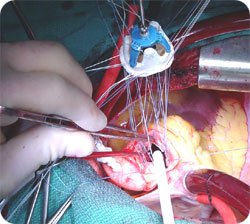
The picture above shows a surgical aortic valve replacement (SAVR). Many, but not all, aortic valve replacement operations are performed surgically using "open-heart" procedures through an incision to the patient's chest (sternotomy) or ribs (thoracotomy).
Recently, the use of transcatheter aortic valve replacement (TAVR) has been used for high, intermediate and low risk patients.
"TAVR is a minimally-invasive procedure that requires no incision to the patient's chest or ribs," according to Dr. Michael Mack, a leading cardiac surgeon at The Heart Hospital Baylor Plano.
Why Do Patients Need Aortic Valve Replacement Surgery?
There are several heart valve disorders which stimulate the patient need for aortic valve replacement surgery. Aortic valve disease can result from a congenital defect. Or, it can result from a serious bacterial infection. Aortic valve disease can also be degenerative.
As Dr. Mack recently stated, "Approximately 12 percent of people over the age of 75 have some form of aortic valve disease."
The two most common diseases that force patients to undergo valve replacement surgery are:
- Aortic Stenosis. A valve experiencing aortic stenosis is narrowed. That means blood flow through the valve is constricted. A stenotic valve has rigid leaflets that have degenerated over time or are experiencing other factors including calcification.
- Aortic Regurgitation. A valve experiencing aortic regurgitation typically maintains loose or floppy leaflets that enable blood to leak back into the heart. Often to referred to as aortic insufficiency or aortic incompetence, aortic regurgitation is typically referred to as a leaky heart valve.
When Is Aortic Valve Replacement Required?
Like most forms of heart disorders, there are different degrees, or levels, of aortic valve disease which determine the need for surgical treatment. Patients with mild and moderate forms of aortic stenosis and aortic regurgitation do not typically require surgery. However, if a patient is diagnosed with a severe form of aortic valve disease, a repair or replacement is often recommended.
It is critical to note that not all patients experience symptoms prior to aortic valve replacement surgery. Patients can be asymptomatic -- without symptoms -- and still suffer from severe aortic valve disease. It is for this reason that patients diagnosed with aortic valve disease, or even a heart murmur, should actively monitor the condition of their heart over time via regular echocardiograms.
Without an appropriately timed surgery, the patient's heart can experience major complications. The most common complication is an enlarged heart muscle which can be a precursor to congestive heart failure. (So you know, my heart had started to dilate (enlarge) just prior to my aortic valve replacement).
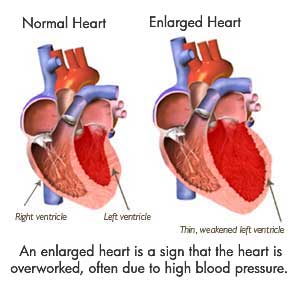
It should also be noted that aortic valve replacement surgery may be needed if the valve leaflets, which control the flow of blood through the heart, suffer from severe aortic valve calcification. Finally, a congential defect, known as a bicuspid aortic valve, may trigger the need for an aortic valve replacement. For me, my bicuspid aortic valve created a situation in which I suffered from both aortic stenosis and aortic regurgitation simultaneously.
Mechanical & Biological Devices
Prior to surgery, the patient, along with their family and surgeon, will select a replacement aortic valve that may be mechanical (artificial) or biological (tissue-based).
- Mechanical heart valve replacements are made from incredibly durable metals, polymers, and other substances that can exist within the body without infection. Mechanical heart valves can exist within the human heart for more than 30 years. However, mechanical heart valves require the patient to take anticoagulation medicine to prevent the risk of blood clots. Blood thinners, like Coumadin, must be used by the patient for the balance of their lives.
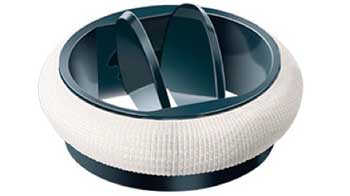
- Biological heart valve replacements are made from the tissue of cows, pigs, horses and humans. The tissue is properly treated with special chemical processes to reduce the risk of infection and rejection. Patients who receive a biological device during an aortic valve replacement surgery are not required to use blood thinners. However, research suggests that the average life expectancy of bioprosthetic valve is between 10-15 years.
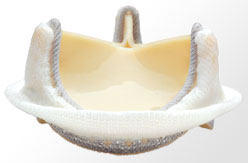
As noted above, there are advantages and disadvantages with each device. Given the patient's health, risk factors, age, diagnosis and lifestyle, valve selection can be a very diffiicult decision for the patient. I encourage you to speak with your doctor, your family and your friends to help you determine the appropriate, aortic valve replacement for you.
The Different Surgical Approaches For Aortic Valve Replacement
As noted above, aortic valve replacement surgery is typically an "open heart" procedure performed by a heart surgeon, also known as cardiothoracic surgeons. There are several different approaches by which the surgeon can access your diseased aortic valve:
- Traditional aortic valve replacement procedures require the breast bone (sternum) to be split down the middle using a procedure known as a median sternotomy. This provides the surgeon with full access to the patient's heart and chest cavity. The patient's heart is stopped and cooled. After the aortic valve replacement is complete, the heart is restarted and the patient's sternum is commonly held together using sternal wires which help the chest plate heal.
- Newer minimally invasive procedures for aortic valve replacement are being developed and used with patients including mini-sternotomy, mini-thoracotomy and transcatheter aortic valve replacement (TAVR). These newer procedures for aortic valve replacement are designed to reduce the trauma to the body (sternum, rib cage) and accelerate patient recovery.
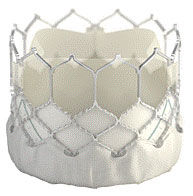
- One additional approach for patients to consider is the Ross Procedure. In this unique form of aortic valve replacement, the patient's own pulmonary valve is used to replace the defective aortic valve. Then, the surgeon uses a homograft valve (from a human donor) and inserts it into the pulmonary position.
Dr. Marc Gillinov Says...
In this video, Dr. Marc Gillinov, Chairman of the Department of Cardiothoracic Surgery at the Cleveland Clinic, discusses minimally invasive surgical approaches for aortic valve replacement.
So you know, Dr. Gillinov performed double heart valve surgery on Robin Williams, the actor and comedian, in 2009. And.. Over 100 patients from the HeartValveSurgery.com community have had successful surgical outcomes with Dr. Gillinov.
For valve selection, there will be several factors - surgeon experience, patient health, age and diagnosis - that will determine the patient's benefit from the surgical approaches referenced in the video above. It's important that the patient, their family and their medical team discuss the advantages and potential concerns of each surgical approach and heart valve replacement device available to the patient.
You May Also Like
To help you learn more about aortic valve replacement surgery, you may like:
- Breakthrough: FDA Approves INSPIRIS RESILIA Aortic Valve Replacement
- Surgeon Q&A Video: Heart Valve Replacement Options with Dr. Trento
- Surgeon Q&A: What are the Advantages of Heart Surgery Through the Ribs?
- Aortic Stenosis Progression: Top 5 Facts Patients Should Know
- Download 7 Free Educational eBooks for Patients
- Meet Aortic Valve Patients in Our Community
Page last updated: November 9, 2023





